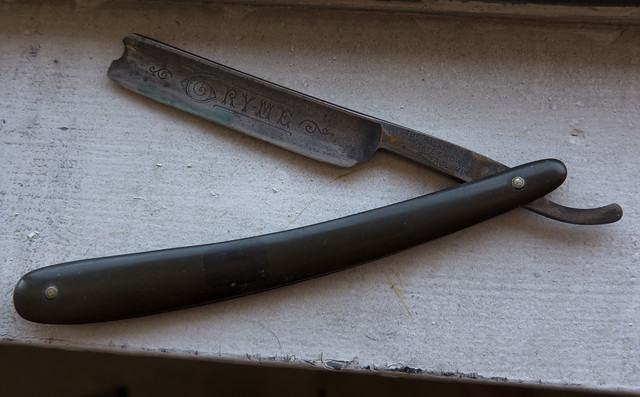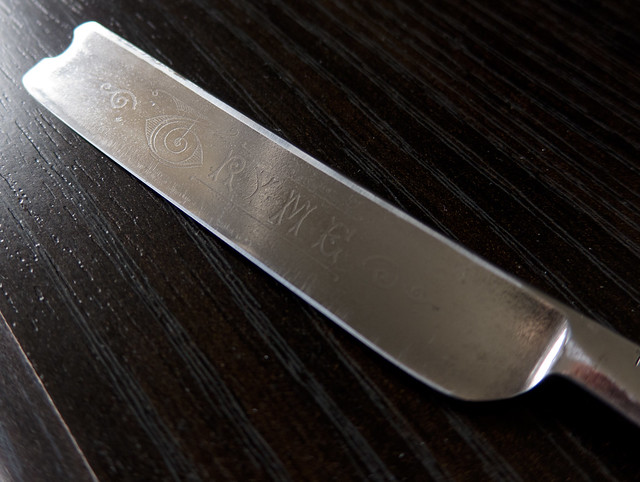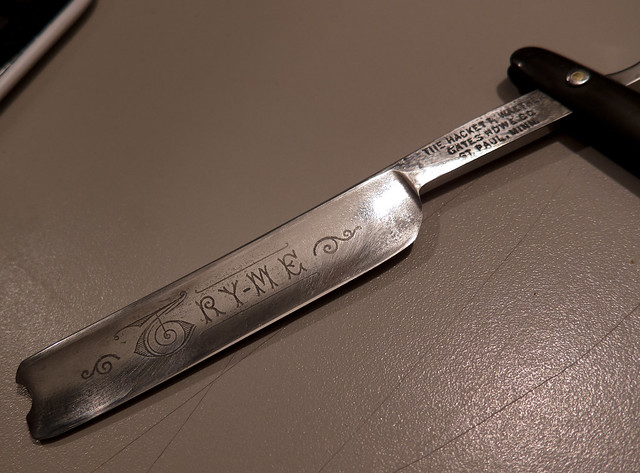Results 1 to 8 of 8
Threaded View
-
05-24-2011, 07:18 AM #1
 Restoring the darkened etching on a blade.
Restoring the darkened etching on a blade.
So I've been teaching myself razor restoration. In the process, I gathered up a bunch of old razors in varying states of decay.
This one was pretty tarnished, but I really liked the blade etching.

Hackett, Walther, Gates Hardware - Before by Zak Jarvis, on Flickr
I didn't want to grind out the pits on it because that would kill the etching, but I did want to get all the rust out. I'd never done anything like this, this being only the second razor I owned. The other I just sanded down (badly). Some quality Dremel time later, I had this:

Pre-Etching by Zak Jarvis, on Flickr
I also repinned it, and that's a bit ugly since I couldn't find real #0 washers, only some sort of very small metric ones that I had to enlarge using a makeshift drill-press. It took hours to get 4 usable washers. So, while I can get these locally, they were not a good time-investment. I ordered a huge pile of the real deal this morning.
Today I finally found a bottle of Mother's polish, and that's made cleaning up my other razors so much easier. But I really did want to do something about that lost etching.
For my first attempt at this, I tried to cut a mask onto the blade using an x-acto and cellophane tape. It didn't work, the features of the etching are just too fine. For my second attempt, I coated the blade in paraffin wax and scraped out the etching with a toothpick, then brushed vinegar on. This worked better, but I couldn't get enough of the wax out with the toothpick head to get a consistent or even particularly dark etch.
A friend told me about Naval Jelly, which is phosphoric acid in gel form. I got a bottle of that today and, indeed, I was able to easily paint it over the etching. I couldn't get it precisely into the etch, but I knew I could sand off the top and get a decent result. Well, the moral to the story is I need finer sandpaper. All I could find today was 600 grit, so the surface is more satin than I'd really like it to be. However, I'm pleased with the etching.

Try-Me etching 1 by Zak Jarvis, on Flickr
In a perfect world I'd have less darkened pits around the main etching. In a perfect world I could make ideal razors appear out of thin air for free, I could retract my whiskers when I don't want them and all my favorite bands would be local. Yeah.
I'm guessing that with more experimentation I can likely do better at darkening only the parts I want. I'll just need practice. I've got an F.W. Engels that needs to have its tang darkened, but that's not nearly such a precision job. I guess, at some point, I'm just going to have to get more etched razors. Poor me.Last edited by Voidmonster; 05-24-2011 at 07:20 AM.
-
The Following 3 Users Say Thank You to Voidmonster For This Useful Post:
Pauly (05-26-2011), str8fencer (05-24-2011), TheBaron (05-24-2011)


 5Likes
5Likes LinkBack URL
LinkBack URL About LinkBacks
About LinkBacks










 Reply With Quote
Reply With Quote